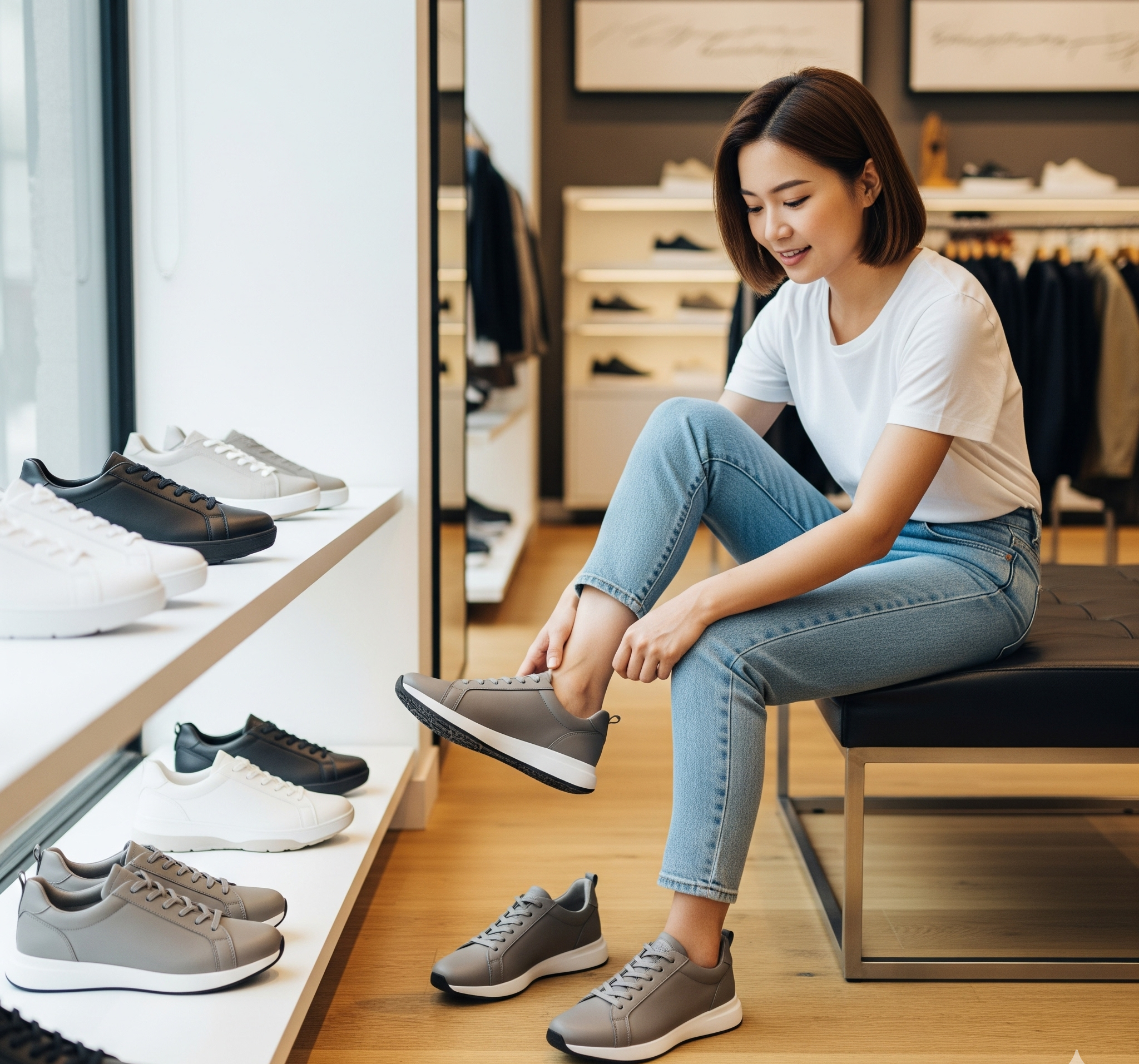Shoes play a vital role in supporting our feet. Ill-fitting footwear can cause falls, pain in the toes and soles, and even foot deformities. To find the perfect fit, visit a store and follow these steps.
Measuring your feet
Record your current foot length, width, and arch length. Don't rely on old measurements, as ligaments and bone-connecting tissues tend to stretch with age. Other foot tissues can also change, altering your foot's shape and size. Wearing incorrect shoe sizes can lead to foot pain.
Measure your feet at the end of the day. Most people experience foot swelling by day's end, especially after activities like standing, walking, or running. For accurate measurements, be active during the day and measure your feet, then try on shoes, in the evening. Measuring in the morning might result in shoes that are too tight.
Stand tall when measuring. Your posture affects foot size and shape. Feet spread out when you stand. It's best to have someone else measure your feet since you can only get an accurate reading while standing upright, looking straight ahead, with your weight distributed evenly on your feet.
Measure your arch length. This is crucial for a good fit. Arch length is measured from the heel to the ball of the foot, where the big toe joint bends. The curve of your big toe should align with the curve of the shoe. With both shoes on, lift your feet onto the balls of your feet. If the shoes bend before or after your big toe joint, the arch length is incorrect.
Fit your shoes to your larger foot. Your feet aren't identical; one is usually slightly larger. Buy shoes that fit the larger foot. You can use pads or insoles to fill the extra space in the shoe for the smaller foot.
 |
It's recommended to measure your feet and try on shoes directly at the store to find the right fit. *Image generated by AI* |
Trying on shoes
Wear the right socks. Wear the type of socks you'd typically wear with the shoes you're trying on, for example, athletic socks with athletic shoes. Sock thickness significantly impacts shoe fit.
Leave 1.25 cm of space in front of your toes. The gap between the tip of your longest toe and the end of the shoe should be 1.25 cm. If you have small hands, this is about the width of your index finger. If you have large hands, it's about the width of your pinky finger. For most people, the big toe is the longest, but some have a longer second toe. Measure according to your longest toe.
Allow 0.4 cm at the back of the shoe. Avoid tight heels, as they can irritate the skin and cause blisters.
Choose shoes with a roomy toe box. Your toes need space to move to prevent issues like corns (thickened skin on the feet), calluses (larger areas of thickened skin), and neuromas (nerve tissue growth between toes).
Walk around in both shoes. Take your time trying the shoes in the store. Walk on different surfaces like carpet and tile.
Shoes should be comfortable immediately. Don't buy uncomfortable shoes hoping they'll stretch to fit.
Opt for lace-up shoes for adjustability. They also provide better support. Slip-on shoes can't be adjusted if your feet swell.
Limit high heels. To prevent foot problems, choose heels no higher than 3.5 cm. High heels put excessive pressure on the front of the foot, potentially leading to pain later.
Anh Ngoc (According to Verywell Health)












